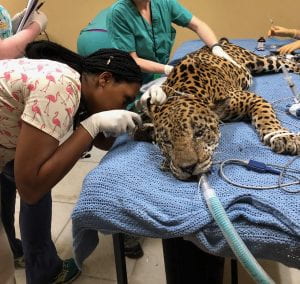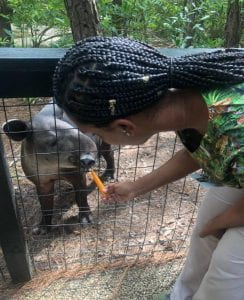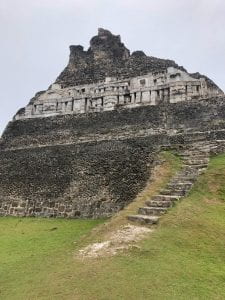Choosing Seneca Park Zoo:
Being a Rochester native, Seneca Park Zoo, home to nearly 100 different species, has always been my home zoo. A couple of years ago, Dr. Chris McKinney, who had worked at the small animal GP my family pets see, transitioned from relief veterinarian to full-time zoo veterinarian. So, as a veterinary student very much interested in a career in zoo medicine, I reached out. And for the past couple of years, as my schedule allowed, I went in for a few days here and there to shadow. This past winter, my schedule finally opened up long enough to facilitate a ~3-week externship, and I took full advantage!
Typical Day:

Canada lynx receiving anesthetized physical exam and survey radiographs.
Each day at the zoo started off similarly enough – review the previous days’ keeper reports for all of the animals housed at the zoo, check in on hospitalized animals in the clinic (if there were any), and then check on any of the animals that had a problem (big or small) flagged in their reports.
Beyond that, there was no “typical day” – which for me, makes zoo medicine so appealing and such a unique challenge. A few days were spent working through planned procedures – an anesthetized full physical/radiographs on a Canada Lynx, annual exams for the Burmese pythons, etc. Others we’d find ourselves bouncing between exhibits as various questions/concerns from the keepers would arise throughout the day. Others yet, we would have a relatively quiet afternoon – allowing me to take full advantage of the veterinary library or review literature to update protocols in advance of the zoo’s AZA accreditation renewal this spring.
And while there was no typical day, the experience as a whole was reflective of what can be expected with a career in zoo medicine – a balance of paperwork/meetings, speaking with keepers, observing the animals, and the actual hands-on clinical work with the animals.

Olive baboon receiving laser therapy treatment
Favorite Memories:
Having learned so much and worked with so many incredible people and animals, it’s impossible to pare it down to one favorite memory or experience. From laser therapy on a baboon, to blood draws on a bearded dragon, to evaluating lameness on a gray wolf, I got to do and see so much. But, some of my personal highlights included the visits to the giraffe barn, working with the sea lions, and Loki (a domestic rat).
About 2 weeks before my externship, the zoo announced the birth of a giraffe calf. And then again, just 2 days before my externship, the zoo announced the birth of a second giraffe calf. And of course, while the calves were incredibly cute and a joy to observe, following Kipenzi’s case (one of the mothers) was particularly memorable. This past summer, Kipenzi was found to have a mass on her jaw that was biopsied and confirmed to be squamous cell carcinoma (SCC). Kipenzi’s care includes scheduled radiographs to assess progression and the application of an immunostimulant as a chemotherapeutic.
Working with the sea lions was another highlight for me. During my externship, there was a flare-up in corneal pathologies. With the sea lions receiving such extensive training and already being conditioned to receive eye-drops daily, I got to have a more hands-on role in this case which was very rewarding. It also led to discussions between myself and the veterinary team on corneal management for sea lions – something we are hoping to potentially explore as a research study in the future.
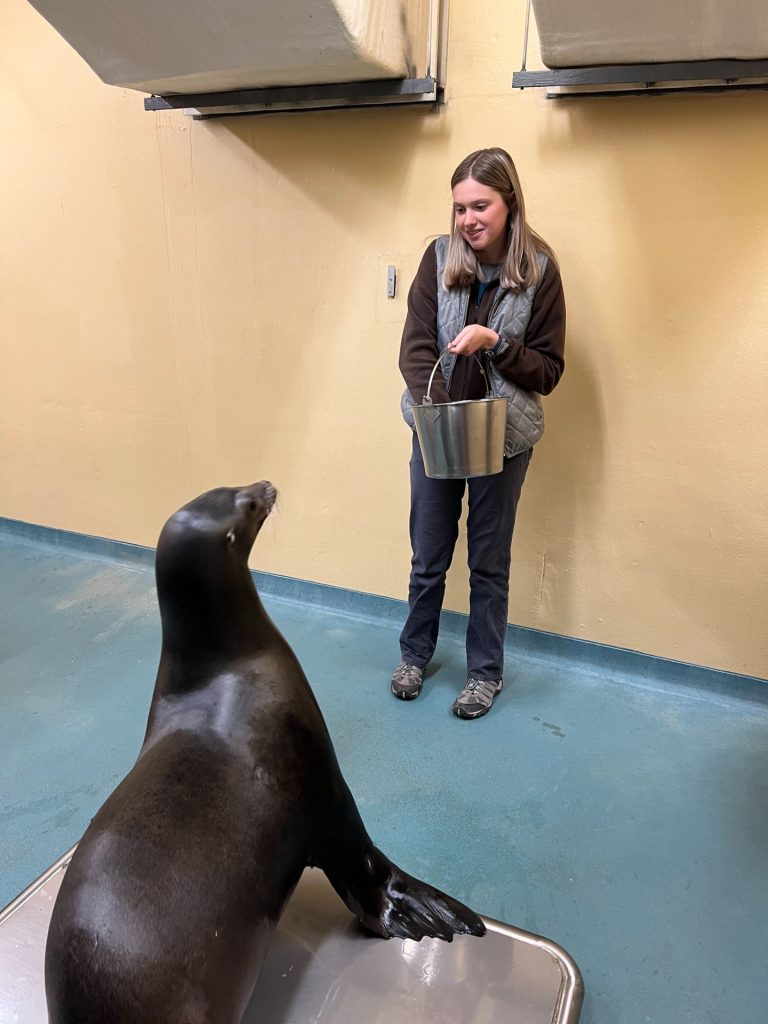
Feeding/training session with California Sea lions in which we are also able to examine their eyes.
And lastly there is Loki the domestic rat – one of the few patients who didn’t quickly scurry away upon the veterinary team’s arrival. Loki had originally presented for a small mass on his cheek which was drained and debrided. We made several follow-up visits to assess his wound as it healed, and Loki, who liked to climb up our arms and perch on our shoulders during his re-checks, quickly became a favorite patient of mine.
Recommendations:
As cliche as it may sound, my biggest piece of advice is to take advantage of any opportunity that comes your way – be it small animal, large animal, exotics, or zoo! All of the zoo/wildlife veterinarians I’ve had the privilege of working with up to this point, have all emphasized the importance of having a good foundational knowledge in the domestic species. And even in my 3 short weeks at Seneca Park Zoo, I found this to be true – I was constantly relating management of species like wolves, giraffes, elephants, etc. back to that foundation of dog, cat, cow, and horse.
Final Thoughts:
I am so incredibly grateful to the amazing team at Seneca Park Zoo – Dr. Chis McKinney, technicians Robin and Tammy, and all of the keepers and curators I met. Everyone there was not only eager to teach and share their knowledge/experiences, but also incredibly supportive and encouraging. I’ve left this experience with so much new knowledge and many incredible memories that I will take with me as I continue to navigate my journey in zoo medicine.
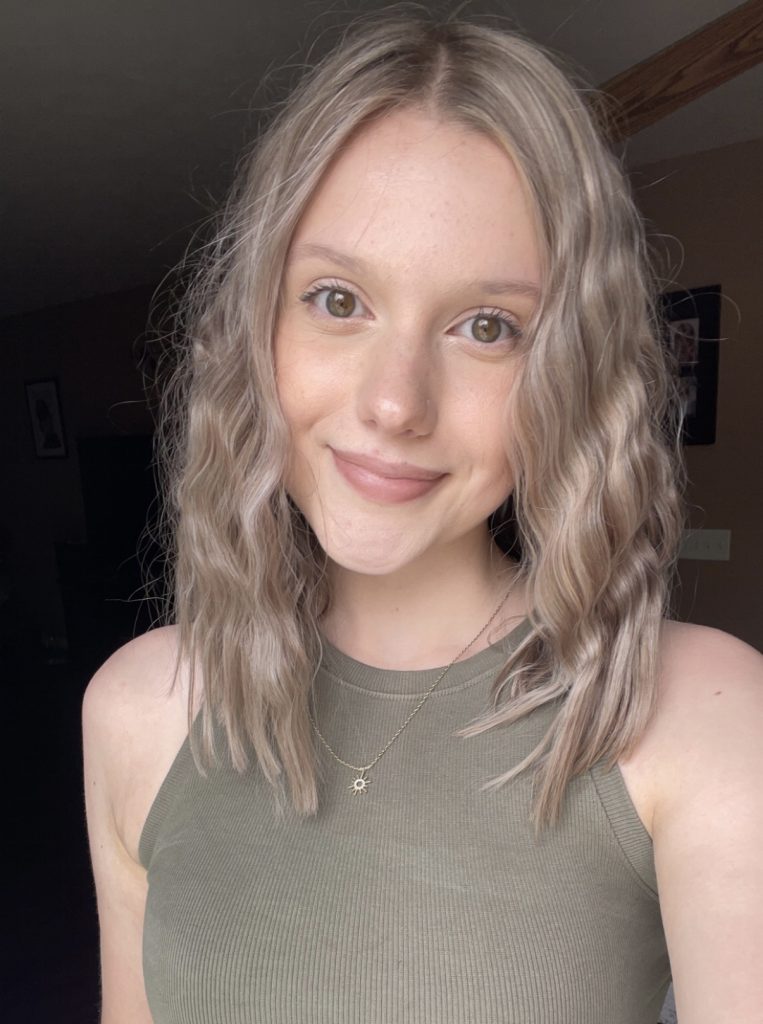
Erin Guntrum, Class of 2025, is from Rochester, NY and received her B.S. in both Animal Behavior, Ecology, & Conservation (ABEC) and Biological Science from Canisius College (now Canisius University) in 2021. While at Cornell, Erin has been a student technician at the Janet L. Swanson Wildlife Hospital. She has also been a member of ZAWS, SAVMA, and the behavior and therio clubs. Erin hopes to pursue a career in zoological medicine and participate in research related to conservation, behavioral endocrinology, and theriogenology.

 Why did you choose to pursue this particular experience?
Why did you choose to pursue this particular experience?
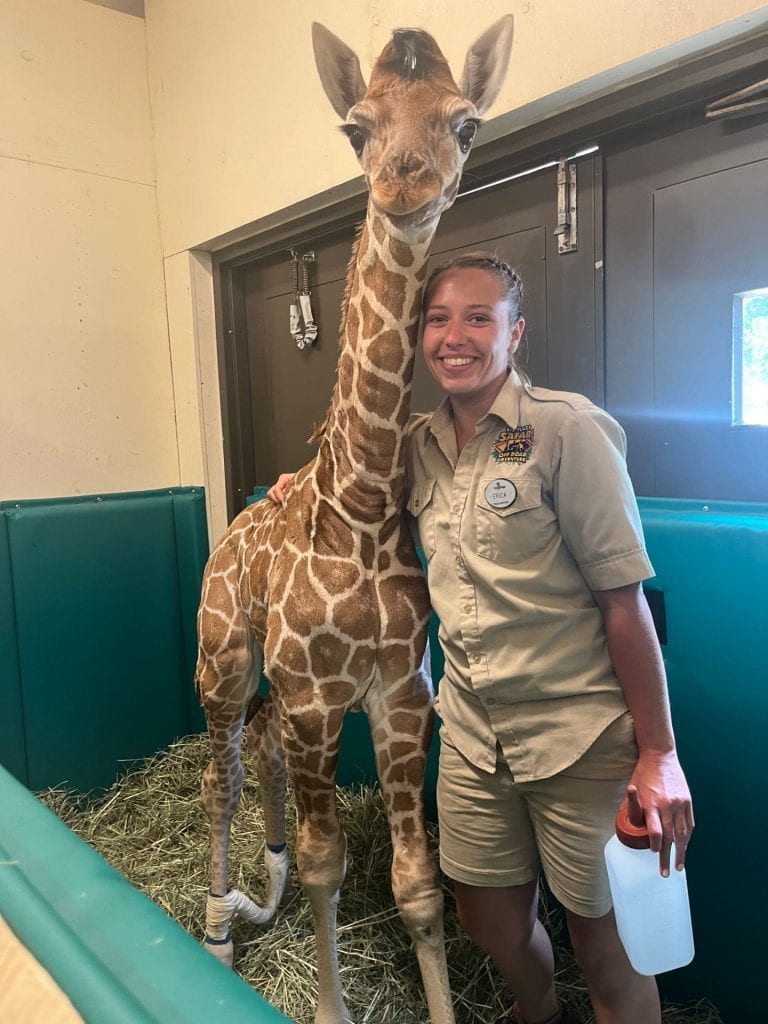 What species did you enjoy working with the most?
What species did you enjoy working with the most?
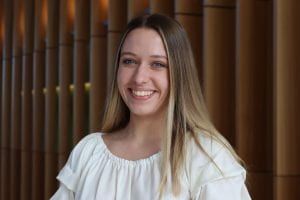



 Dr. Marinkovich is thrilled to come back to Cornell University and looks forward to seeing how it has changed since graduating in 2014. He is really looking forward to reconnecting with his vet school mentors, namely Dr. Noha Abou-Madi and Dr. Karen Kerns, who both play such an important role in the lives of students interested in pursuing zoological medicine. But, perhaps most notably, Dr. Marinkovich is eager to interact with vet students who share his drive to make a difference in the world through the lens of veterinary medicine. It was not that long ago that Dr. Marinkovich was an aspiring zoo vet like many of us, so he recognizes the stress and hard work that goes into actualizing that dream. Through his lecture, he hopes to convey excitement, ambition, and peace of mind, being a huge proponent for mental health in veterinary medicine. I felt so inspired by Dr. Marinkovich in just the short while I got to spend interviewing him for the WildLIFE Blog, an interaction I consider myself lucky to have had. Be sure to register for the 17th biannual Special Species Symposium so that you can relish in his journey towards becoming a Clinical Veterinarian at the San Diego Zoo, a story that will fill you with admiration, motivation, and awe.
Dr. Marinkovich is thrilled to come back to Cornell University and looks forward to seeing how it has changed since graduating in 2014. He is really looking forward to reconnecting with his vet school mentors, namely Dr. Noha Abou-Madi and Dr. Karen Kerns, who both play such an important role in the lives of students interested in pursuing zoological medicine. But, perhaps most notably, Dr. Marinkovich is eager to interact with vet students who share his drive to make a difference in the world through the lens of veterinary medicine. It was not that long ago that Dr. Marinkovich was an aspiring zoo vet like many of us, so he recognizes the stress and hard work that goes into actualizing that dream. Through his lecture, he hopes to convey excitement, ambition, and peace of mind, being a huge proponent for mental health in veterinary medicine. I felt so inspired by Dr. Marinkovich in just the short while I got to spend interviewing him for the WildLIFE Blog, an interaction I consider myself lucky to have had. Be sure to register for the 17th biannual Special Species Symposium so that you can relish in his journey towards becoming a Clinical Veterinarian at the San Diego Zoo, a story that will fill you with admiration, motivation, and awe.
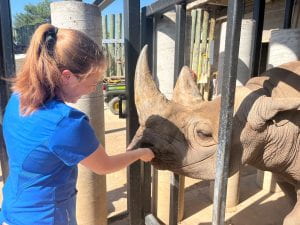

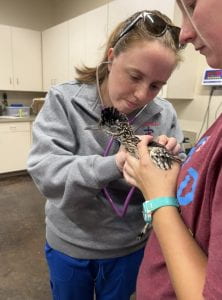
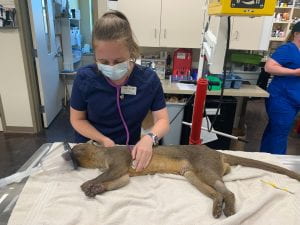
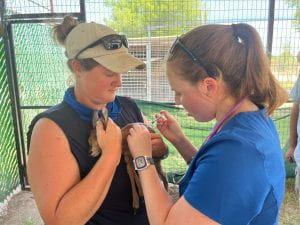
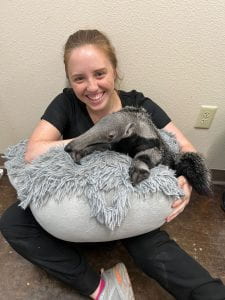
 Colleen Sorge, Class of 2024, is a Cornell DVM student from Long Island, NY. She obtained her undergraduate degree in Animal Science from Cornell University in 2020. She has a wide range of interests within the veterinary field, including both small animal and wildlife medicine.
Colleen Sorge, Class of 2024, is a Cornell DVM student from Long Island, NY. She obtained her undergraduate degree in Animal Science from Cornell University in 2020. She has a wide range of interests within the veterinary field, including both small animal and wildlife medicine. Dr. Matt Marinkovich always had a passion for wildlife but was initially unsure as to what career path might suit him best. “I always knew I wanted to do something with wildlife or something conservation related, but it took a little while to find what that niche was, whether PhD or vet school. I had a couple experiences at SeaWorld San Diego when I was in undergrad and at the National History Museum in Santa Barbara working with the Marine Mammal Stranding Network that led me to really feel like veterinary medicine was the route to go.” After taking 3 gap years, he began his time at Cornell Vet, going on to complete his DVM in 2014.
Dr. Matt Marinkovich always had a passion for wildlife but was initially unsure as to what career path might suit him best. “I always knew I wanted to do something with wildlife or something conservation related, but it took a little while to find what that niche was, whether PhD or vet school. I had a couple experiences at SeaWorld San Diego when I was in undergrad and at the National History Museum in Santa Barbara working with the Marine Mammal Stranding Network that led me to really feel like veterinary medicine was the route to go.” After taking 3 gap years, he began his time at Cornell Vet, going on to complete his DVM in 2014. While well aware that the field of zoological medicine is competitive, Dr. Marinkovich has a refreshing viewpoint. “I think really just focusing on becoming the best vet you can be is the number one step. I think what we look for in terms of a good resident is someone who has a really good foundation in veterinary medicine, and that involves all species. The next time you have to help pull a calf, it may be an exotic bovid rather than a dairy cow.” His perspective, he says, is largely informed by his respect for mental health. “I’m a huge proponent of mental health and being happy with what you’re doing and enjoying each step of the journey. I think you need to take each step and try to get the most out of each experience for what it is. It’s great if zoo residency or working a zoo job works out, but if not, being a vet is an awesome job and you still have that to be fulfilled by. You have to try to not let the quest for that elusive zoo resident position to be the end all and be all of what it means to be fulfilled in this field. Developing your skill sets, really focusing on your own mental health, and who you are as a vet and as a person is going to set you up for success.”
While well aware that the field of zoological medicine is competitive, Dr. Marinkovich has a refreshing viewpoint. “I think really just focusing on becoming the best vet you can be is the number one step. I think what we look for in terms of a good resident is someone who has a really good foundation in veterinary medicine, and that involves all species. The next time you have to help pull a calf, it may be an exotic bovid rather than a dairy cow.” His perspective, he says, is largely informed by his respect for mental health. “I’m a huge proponent of mental health and being happy with what you’re doing and enjoying each step of the journey. I think you need to take each step and try to get the most out of each experience for what it is. It’s great if zoo residency or working a zoo job works out, but if not, being a vet is an awesome job and you still have that to be fulfilled by. You have to try to not let the quest for that elusive zoo resident position to be the end all and be all of what it means to be fulfilled in this field. Developing your skill sets, really focusing on your own mental health, and who you are as a vet and as a person is going to set you up for success.”  Colleen Sorge, Class of 2024, is originally from Long Island, NY. She graduated with a B.S. in Animal Science and a minor in English from Cornell University. She often finds herself missing her humanities courses in vet school and is thrilled she can combine her passions for writing and for veterinary medicine as the WildLIFE Blog Editor.
Colleen Sorge, Class of 2024, is originally from Long Island, NY. She graduated with a B.S. in Animal Science and a minor in English from Cornell University. She often finds herself missing her humanities courses in vet school and is thrilled she can combine her passions for writing and for veterinary medicine as the WildLIFE Blog Editor.